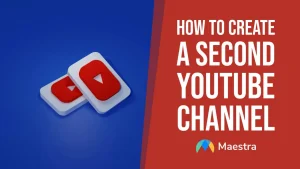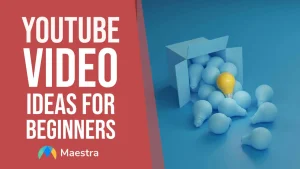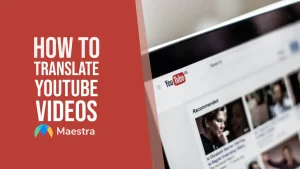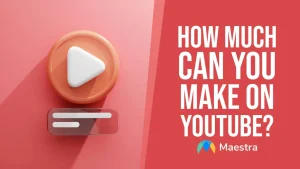How to Make a Video Essay (with 5 Inspiring Examples)
- Serra Ardem

In the world of digital media, video essays are a canvas where creativity meets critical thinking. From pre-production planning to post-production editing, these videos require a careful balance of visual elements, narrative structure, and technical skills to effectively communicate your ideas.
In this blog, we will:
- Explore different types of video essays
- Guide you on how to make a video essay step-by-step
- List 10 best practices for creating compelling video essays
- Share 5 great video essay examples for further inspiration
Let’s get started.

What is a video essay?
A video essay is essentially a written essay brought to life through the use of video footage, narration, music, and other multimedia elements. As a form of creative nonfiction, it blends the depth of written essays with the power of visual storytelling.
Best video essays are:
- Personal and reflective; often explore the author’s personal experiences, feelings, and thoughts.
- Multifaceted and creative; combine various forms of media to keep viewers engaged.
- Argumentative or analytical; present a thesis and support it with evidence, or break down and analyze a particular subject.
- Thought-provoking; aim to stimulate viewers’ critical thinking and intellectual curiosity.

Before we delve into the steps on how to make a video essay, let’s take a look at its different types:
How to Make a Video Essay Step-by-Step
Whether you’re exploring a personal story or making a strong argument about a current issue, video essays offer a powerful format for self-expression and analysis. Here is how to make a video essay in 3 stages:
Pre-production
- Choose your topic and define your thesis statement. Select a topic that interests you and that you understand well. Then develop a clear and concise thesis statement that outlines the main argument or claim of your essay. For example, if you’re creating a personal college application video, your thesis might focus on how a specific experience shaped your worldview or contributed to your personal growth.
- Gather research materials. Conduct thorough research to gather information that supports your thesis. Make sure to organize your sources so you can reference them accurately during the production and editing phases.
- Develop an outline and craft a script. Break down your outline into introduction, body, and conclusion. List the main points you will cover in each section. This will ensure that your essay flows logically and smoothly. Then write a script that expands on your outline.
- Create a storyboard. You don’t have to be a professional artist; just sketch out a basic visual plan of how your video will unfold. Map out the key scenes, shots, and visual elements that correspond to your outline. Include captions and notes to describe each shot.
- Prepare your equipment and software. Gather the video equipment for your video production, such as camera, microphone, tripod, and lighting. If you’re going to use AI tools, familiarize yourself with the software and test it with sample footage to ensure it works as expected.

- Set up your equipment. Position your camera, lighting, and microphone according to your script. Make sure that the camera is stable, the microphone is properly set up for clear audio, and the lighting is adjusted to enhance visibility and create the desired mood.
- Record or generate your video. Follow your script and storyboard to shoot the necessary footage. Pay specific attention to framing, focus, and audio quality during recording.
If you’re using an AI video generator, provide the tool with your script, and select the desired style or aesthetic for your video. The AI will then process your input and generate the video essay. You may need to provide additional details or make adjustments during the generation process.

10 AI Video Generators for Beginners (with Best Practices)
Post-production.
- Edit your footage. Import it into your chosen video editing software. (Popular options include Adobe Premiere Pro , Final Cut Pro , and DaVinci Resolve .) Arrange clips according to your script and storyboard, trim unnecessary parts, and correct any visual or audio errors for a polished final look. In case of AI video generators, review the generated content carefully and utilize the tool’s editing features as you need.
- Incorporate music, sound effects, and text overlays. Make sure that auditory elements complement the mood and do not overshadow narration. Integrate text overlays to introduce sections, highlight key points, or provide additional context. All these elements must be seamlessly integrated and add value to your video essay.
- Add subtitles and a transcript . Subtitles will make your video essay accessible to a broader audience and facilitate comprehension for those who prefer or require visual text. Always check if captions are synchronized with the audio and accurately represent the spoken content. Meanwhile, generate a transcript of the video to provide a textual version of the content, which can also aid in SEO and accessibility.
- Do a final review and make necessary adjustments. Watch your video essay in its entirety to ensure that all elements are cohesive and effective. Consider seeking feedback from others to confirm that your video conveys your message clearly.
- Export and upload your video essay. Choose the appropriate format and resolution for your intended platform. When uploading your video, write a compelling title and add an eye-catching thumbnail to attract viewers. Include relevant keywords and tags to increase discoverability.

10 Best Practices for Making Video Essays
In addition to the instructions mentioned above, these 10 best practices on how to make a video essay can make your content even more impactful:
- Rehearse your script. Practice makes perfect, so rehearse your timing, intonation, and pacing to reduce the likelihood of errors and improve overall presentation.
- Have a strong opening and closing. Start the video essay with an intriguing introduction to grab your audience’s attention, and end with a strong conclusion to reinforce your main points and leave a lasting impression.
- Avoid rambling or going off on targets. Stay focused on your main points and do not include unnecessary elaboration or unrelated anecdotes, as every segment must contribute to your thesis.
- Incorporate data or statistics. Present them in a clear and understandable way, utilizing visuals like charts or graphs to make it more relatable for viewers.
- Use B-roll footage, graphics, and animations to enrich your main content. These elements can help you illustrate complex ideas, reinforce your arguments, and make your video essay more memorable.
- Provide high-quality audio. Minimize background noise during recording, and adjust audio levels and eliminate any distracting sounds during post-production.
- Prioritize accessibility. Include subtitles and closed captions to aid deaf and hard of hearing viewers while maintaining high contrast between text and background for better readability.
- Encourage audience interaction. Add calls-to-action (CTAs) for viewers to comment, like, share, or subscribe, and ask them to share their opinions and experiences related to the topic.
- Track and optimize. Regularly check view counts, watch times, and engagement rates to understand how well your content is performing and analyze the data to refine your approach.
- Experiment and have fun. Try different approaches, such as using various editing styles or narrative techniques, and stay open-minded along your creative journey.
Add AI Subtitles to Your Video Essay
This will not only improve the accessibility of your video essay but also boost its SEO performance and multiply your viewership.
5 Powerful Video Essay Examples
Featuring an example from each category, these 5 videos can inspire you with various approaches on how to make a video essay.
Personal Video Essay
This college application video is a great example of a personal video essay. With a clear structure, it demonstrates why the person is a good candidate and utilizes editing features smoothly. The effective use of graphics, background music, subtitles, and transitions all contribute to the success of the video.
Argumentative Video Essay
This argumentative video essay named “How Discounts Keep You Poor” shows the importance of well-done research for this kind of content. The main argument is supported by solid reasons and examples, which are highlighted with eye-catching text overlays. The call to action at the end of the video invites viewers to share their own thoughts on the subject and subscribe to the channel.
Analysis Video Essay
Titled “Why Do Movies Feel So Different Now?” , this analysis video essay focuses on how movies have evolved since modernism. Based on movements like postmodernism and metamodernism, the content is organized into chapters to create a logical flow. A professional voiceover accompanies high-quality footage from movies, all creating a final harmonious piece.

How to Add Chapters to Youtube Videos
Experimental video essay.
Going beyond traditional video game reviews, this experimental video essay explores gaming as a perfectionist . It adopts unique audiovisual techniques to blend in-depth analysis with unconventional storytelling. The clever use of humor and game footage also adds an experimental flair to the typical video essay format.
Hybrid Video Essay
This hybrid video essay titled “drowning in entertainment: the age of distraction” combines personal, argumentative, analysis, and even experimental formats to delve deep into how we interact with information today. It uses attention-grabbing B-roll footage, still images, and text overlays to enhance the narrative. The talking head sections further personalize the content, allowing the creator to build a direct and engaging connection with the audience.
Frequently Asked Questions
How long is a video essay, how do you get ideas for a video essay, what to wear for a video essay, how to make a video essay for youtube, how to make a video essay for class.
Featuring actionable tips, this blog covered the steps on how to make a video essay and listed 10 best practices for making this kind of content even more polished and memorable. It also shared 5 inspiring video essay examples in different types.
Here are our 3 golden rules for creating an impactful video essay:
- Define and stick to your thesis statement. This will be the core of your video essay and help you stay focused during the production phase.
- Have a strong beginning and end. Both should be carefully crafted to hook your audience from the start and provide a satisfying conclusion that ties everything together.
- Utilize various multimedia elements. Incorporate video footage, images, text overlays, and music to express complex ideas and maintain viewer interest.
Follow the tips in this blog to refine your video essay creation process, and feel free to experiment with different formats along the way.

About Serra Ardem
Serra Ardem is a freelance writer and editor based in Istanbul. For the last 8 years, she has been collaborating with brands and businesses to tell their unique story and develop their verbal identity.
Related Posts

How to Create a Second YouTube Channel in 5 Easy Steps

60 Easy and Best YouTube Video Ideas for Beginners

How to Translate YouTube Videos (Subtitles & Voiceover)

How Much Can You Make on YouTube? (Shorts, Streams and More)

12 Top Faceless YouTube Niches for 2024

How to Search YouTube Transcripts in 3 Ways
How to make a video essay: A guide for beginners

What type of content do you primarily create?

Video essays are an incredibly popular genre on YouTube, and many new creators are eager to have their views heard on topics in culture and politics. But making a video essay involves a lot more than just sitting in front of a camera and pressing record. This guide is intended for beginners who don’t quite know where to start.
What is a video essay?
A video essay’s primary defining feature is that it sets out to make an argument. It is, to put it simply, like an essay you wrote in school. Video essays often cover politics, popular media, or science.
But unlike the essays you wrote in school, video essays need extensive visual accompaniment, whether that’s footage (or B-roll ), still images, or animation.
Here’s how you can get started:

Step 1: Craft a thesis
Good video essays will have a central thesis explored throughout the piece. If you can’t summarize your thesis in a sentence (sometimes two), you’ve still got work to do. The best theses immediately leave the viewer wanting to know more. Test it on friends: If you state your thesis to friends and get reactions of curiosity or excitement you’re on to something.
Consider one of my favorite video essays, whose thesis is right in the title: "Why Snowpiercer is a sequel to Willy Wonka and the Chocolate Factory."
Sometimes, a thesis is a little more subtle, but nonetheless important. In Yhara Zayd’s video on horror movies, she argues that horror has always been a genre for social criticism.
The rest of your video isn’t just proving that thesis, though that’s important. You'll want to explore the twists and turns of the idea. What questions does your thesis raise? What are the big doubts about your thesis, and how do you address them? How can we zoom out from your thesis and ask even bigger questions?
Step 2: Determine your audience
Your audience will dictate what level of complexity and detail you should cover in your video. If you’re an engineering channel, maybe you want to appeal to working engineers who understand the jargon of the profession. But if you’d like a broader audience, you’ll need to take the time to define terms and give background information. The best video essays usually appeal to both—their topics are unique enough to be interesting to people with prior knowledge of the topic, while accessible enough to be understood to a casual viewer.
Step 3: Organize your research early
Your video essay should have lots of supporting evidence. Aside from the usual list of articles and books, video essays can also use visual evidence.
If you’re commenting on media, that means hyper-specific shots and lines of dialogue. If you’re commenting on history, that means old news clips. Filmed interviews are a great resource regardless of the topic.
Whenever I'm trying to cover a show, I’ll watch the show (sometimes twice), take extensive notes, pause to write out lines of dialogue, and mark where specific moments supported various themes, motifs, or ideas.
I've always regretted telling myself I’d remember a specific line or shot because I'd find myself spending an hour to hunt it down later in the process.
Whether you’re commenting on news footage, video games, or film and TV, I cannot stress enough how much extensive notetaking will improve your video essay later in the process.
The same advice goes for any books or news articles you might cite: annotate extensively and cite them in your piece.
Step 4: Familiarize yourself with "fair use"
Many video essays source footage from the news, TV, and film without licensing them. I'm not here to give advice on the legality of that, but I do think any video essayist should familiarize themselves with fair use .
Fair use is a set of criteria that a creator can use to defend their use of copyrighted work. It's not a license to freely use copyrighted work if you think you fit those standards; it’s a series of tests a judge should weigh in court.
Usually, it doesn’t come to that. Most copyright issues go through YouTube’s copyright claim system , which you should also read up on. A film studio may claim your content, or block it altogether, for using their copyrighted material. YouTube allows you to appeal these claims , but if both parties won’t give up, the question can only be settled by a judge (in the US, at least).
Step 5: Start your script
Be sure to use a two-column script, rather than just writing out everything as if it were a traditional essay.
In one column, you’re writing what you’re saying, or what the footage is saying. In the other, write what you plan to show. Your notes here should be specific enough to help you later in the editing process. You may want to add a third column for notes, or sources to cite later.
Writing a video essay follows some different rules than what your English teacher might have expected. Most video essays use a conversational style, and include words, phrases, and grammar that would never fly with the written word. Sometimes that includes filler words, like starting a sentence with “so” or putting an “um” for effect. Just don’t overdo it.
Other writing rules still apply. Be concise, use active verbs, and otherwise just make sure you sound like a human.
Step 6: Film (or record)
You don’t need a $10,000 filming setup to make good video essays. Plenty of people start with just a microphone, completely avoiding the camera altogether in what's known as a faceless YouTube video .
The two most important things to recommend: get good sound, and be natural. People can tolerate a lot of visual sins, but usually won’t put up with bad audio quality. Similarly, you don’t need to have the charisma of a talk show host, but people have no tolerance for on-screen performances that seem forced or fake.
That is all to say, get a decent microphone and be yourself. If you’re on-screen, buy a cheap teleprompter setup for your phone or camera.
Step 7: Start editing
There are many options for video editing software out there (and Descript is a great one), even for people with limited video editing experience. This article isn’t long enough to be an editing guide , but a few quick tips for a true novice:
- Don’t linger on any one visual for too long. Instead, mix up the visual interest of your video.
- Emphasize important concepts with text on screen.
- Take the time to learn a little about color grading .
- Clean up any noticeable background noise .
Step 8: Figure out your title and thumbnail
This may be the last step of this article, but it should often begin while you’re brainstorming. Your title and thumbnail should generate intrigue without giving it all away. Video essays often lean on titles with “How” and “Why.” Lessons from the Screenplay is a good example:
But video essays can also make provocative statements that make the viewer curious about how you’ll back it up. Consider Kurzgesagt – In a Nutshell’s “ Smoking is Awesome ,” which I promise is not pro-tobacco.
Step 9: Publish
Finally, it's time to put your video out into the world and see how it fares. Your first video essay won't be perfect. It's important to put your work in public, take in feedback, and move on to your next project. Like all things, skill comes with time.
Related articles

Featured articles:

AI for Creators
8 creative exercises you can do with AI tools
AI can push you out of your comfort zone and make you consider new perspectives — both very important to real creativity. Here's how to do it.

How to make a tutorial video so you only have to teach it once
Learn to efficiently plan, script, record, and edit tutorial videos to teach any audience anything.

Podcast grants 101: How to get funding for your show
Podcasts cost money, and podcast grants can help. Discover the various grants available and essential tips for a successful application.

Descript tutorial for beginners: 6 steps to get started
Hit the ground running with this Descript tutorial. Import, edit, and publish your audio or video project with the intuitive text-based editor.

30 faceless YouTube channel ideas for anonymous engagement
Discover 30 faceless YouTube channel ideas to drive engagement and make money without showing your face.

How much do YouTubers make? See real-world examples
There's no single answer to how much YouTubers make. But whatever your channel size, this article will give you a good idea of what to expect.
Articles you might find interesting

How to make Instagram Reels as a beginner: Pro tips & best practices
Learn how to make Instagram Reels like a pro with expert tips and best practices. Create engaging short videos and boost your follower growth.

Best podcast audio interfaces: Advice from a 25-year pro
A digital audio interface is a link between your podcast microphone and your audio recorder, translating analog audio, like your spoken voice, into a digital language.

How to write an SEO YouTube description that encourages clicks
In this article, you’ll learn how to approach SEO research, as well as how to write a YouTube description that will draw users in and keep them consuming your content.

Why you should be promoting your podcast on LinkedIn — and how to do it right
You’re probably overlooking one of the most powerful promotional tools there is: LinkedIn. By playing by the platform's rules, you can create a loyal following of podcast listeners.

12 free ways to get more YouTube views
Growing your viewership isn’t rocket science. We’re not saying you’ll instantly go viral, but if you do these 12 things, you’re guaranteed to at least get more YouTube views — without investing money into YouTube ads.

Product Updates
How Imputations Work: The Research Behind Overdub
Anyone in audio or video production has experienced the frustration of reviewing tape and finding just the right sound bite for a story… if only the speaker hadn’t flubbed some words or forgotten to mention something crucial at the right time. Sometimes the only choice is to go through the effort of re-recording or leaving out the almost-perfect sound bite altogether.

Join millions of creators who already have a head start.
Get free recording and editing tips, and resources delivered to your inbox.
Related articles:
Share this article

IMAGES